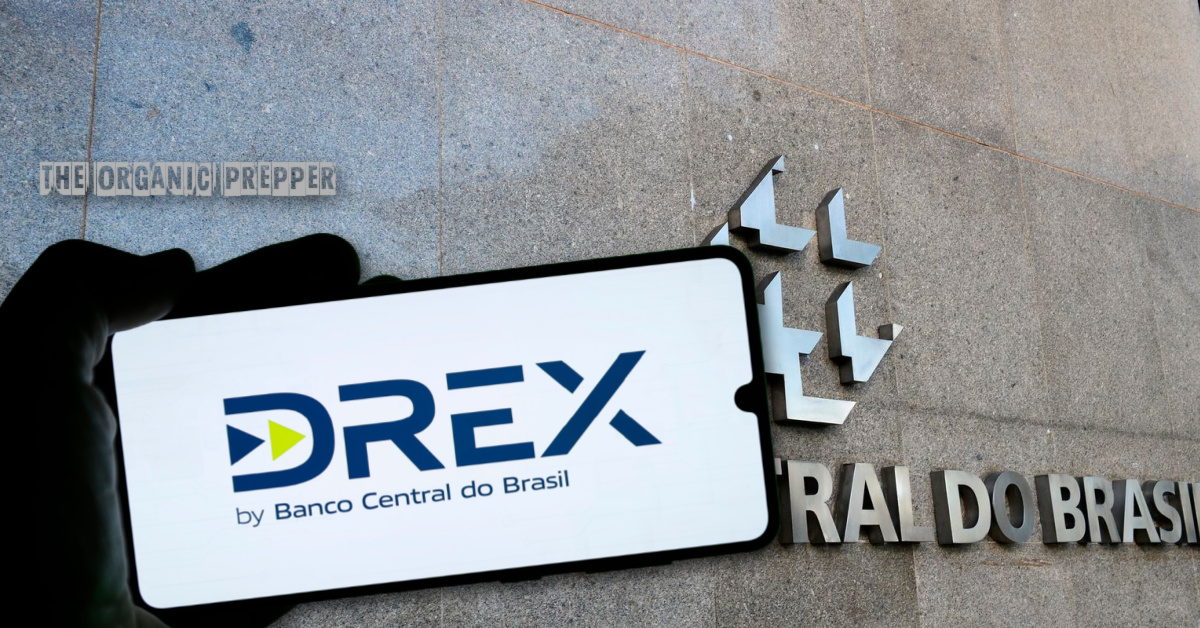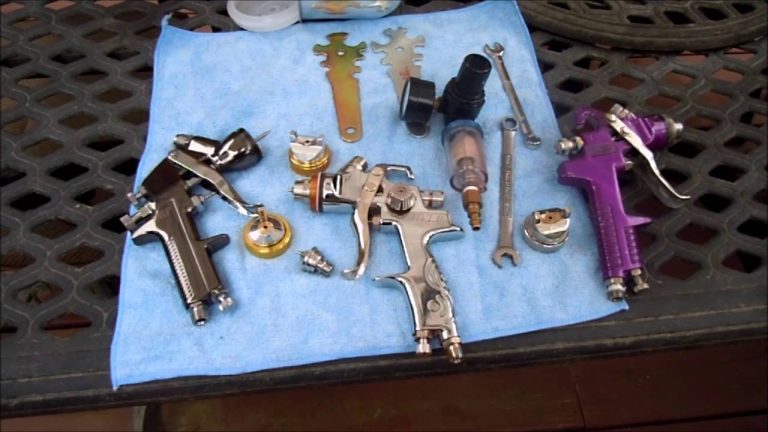(Psst: The FTC wants me to remind you that this website contains affiliate links. That means if you make a purchase from a link you click on, I might receive a small commission. This does not increase the price you’ll pay for that item nor does it decrease the awesomeness of the item. ~ Daisy)
By the author of Street Survivalism: A Practical Training Guide To Life In The City and The Ultimate Survival Gear Handbook
It’s official: the Brazilian Central Bank has announced the introduction of its CBDC (Central Bank Digital Currency). It’s called DREX, the acronym for Digital Real Electronic X (real is Brazil’s currency), and the finished logo reveals the project is, in fact, quite advanced. Here’s the meat of the Central Bank’s press release:
“DREX is coming to facilitate the life of Brazilians. With a new face, our Central Bank Digital Currency project – created and operated by the Brazilian Central Bank – has its own name. Previously called Real Digital, it will provide a safe and regulated environment for new businesses and more democratic access to the benefits of digitalizing the economy for citizens and entrepreneurs.
The brand, developed by the Central Bank, the combination of letters creates a word with strong and modern sonority; D and R allude to Real Digital; E comes from electronic, and the X gives the idea of modernity and connection, or the use of Distributed Ledger Technology (DLT) adopted by DREX, giving continuity to the family of Central bank solutions created by the Pix.”
The coordinator of the initiative at the Central Bank, Fabio Araujo, had more to add. During a live event for the press, he emphasized that “the development of DREX is primarily aimed at improving access to financial services…” He added that “By enabling simple and reliable access to registered values through DLT technology, we reduce costs and democratize access to financial services.” [SOURCE]
CBDCs are not crypto, just digital fiat money.
Even though it’s based on blockchain technology, DREX is actually a tokenized real regulated by the Central Bank. That’s what each and every CBDC being developed at the moment is about (and believe me, every country’s CB is currently working on that).
According to the monetary institution, the DREX will be pegged to the real at 1:1 rate, and freely exchangeable. In other words, anyone can instantly exchange between DREX and physical notes without bureaucracy at any moment. However, transactions between reals and DREX will have a cost, though the Central Bank hasn’t been clear on what that will be.
I’m not an expert, but how exactly that will work isn’t clear to me at the moment. I mean, it will be a one-to-one value, but the transaction has a fee, however nominal. Imagine the cumulative effect of millions of transactions or large sum contracts. I guess we’ll have to wait for more details on that.
Cash has been under attack for a while, and that war only getting worse.
In fact, people are willingly giving up physical currency already for various reasons that don’t really matter now. Notwithstanding, one of the stated intentions is to replace cash with DREX in the future, so they’re not even hiding it anymore.
These communiqués read like a dream, invariably sold as a civilizational milestone, a wonderful technological achievement, a solution to a non-problem. What these bureaucrats fail to mention is that CBDCs are also a form of centralization, surveillance, and control that can be more easily manipulated and weaponized to enforce conformity and stifle dissent. And we can already see that happening.
The Central Bank also declared DREX is being tested by selected institutions and is set to be launched for the general public by the end of 2024. The development of the Brazilian CBDC wasn’t exactly a secret but took place somewhat surreptitiously. I see the same pattern everywhere: one declaration being slipped here and there to prepare the public’s opinion and test the waters. Then one day, CBDCs are here.
As mentioned in the press release, Brazil already has a direct electronic instant payment system.
It’s called Pix and was created and operated by the Brazilian Central Bank in 2021. The Pix system cuts out the middle man (i.e., the retail banks and other institutions), enabling free, instant, 24-7 direct payments and transactions between people and also businesses.(This is similar infrastructure to the FedNow system that Daisy wrote about recently.)
Thanks to its convenience, Pix was quickly and widely embraced by commerce, companies, and the public. On the other hand, all transaction data gets centralized on an official institution, in practice putting users one step closer to total control. Now DREX is coming to close that gap (I can’t help thinking DREX sounds like a rapper name, but I digress).
The ease and speed of Pix also drew the attention of criminals, and all sorts of imaginable hits and scams related to the system soared almost immediately. People now keep a second smartphone with their primary banking apps at home, in fear of being robbed or hijacked and having their accounts wiped clean in minutes. Sometimes we forget technology is great but can also be used for (and by) the bad.
Centralized digital currency, payment systems, AI, and sovereignty.
A lot has been said and discussed about the possible consequences and potential risks of giving up personal information in exchange for convenience, a little change, or even nothing in some cases. For a clear example, see what’s happening with Worldcoin, OpenAI/ChatGPT CEO Sam Altman’s crypto project that easily convinced thousands to scan their iris in exchange for a few tokens. Now imagine what a powerful central bank can do with the support of an evil government…
I won’t rehash everything here, but it’s worth noticing recent developments showing how centralized digital transaction systems and currencies can be weaponized and used against the opposition or, in fact, any citizen:
- Former right-wing president Bolsonaro launched a crowdfunding campaign to help pay the fines imposed by the Electoral Court for his declarations against the voting system. Donations amounted to R$ 17 million, or about 3.4 million in USD. The financial activity council (COAF) issued a report listing many of the donors responsible for some of the 770.000 Pix deposits.
- A similar method has been used to track down, identify and persecute participants and supporters of the Brazilian January 8th insurrection by the DoJ and the Supreme and Electoral courts:
“We have a secure and consistent line of investigation focused on tracking financial movements undertaken via Pix,” said a senior federal police officer involved in the sprawling, nationwide investigation, speaking anonymously to discuss an ongoing probe. “The financiers’ time is up.” [SOURCE]
- In another worrying episode, a political commentator and influencer had his bank accounts frozen and all funds seized by the Supreme Court for questioning the electoral system. According to the Supreme Court justice heading the Electoral Court, on the grounds of “hatred speech, subversion of order and incentive to the breakdown of institutional normalcy and democracy.”
Do you really think your expenditures will be private? Particularly if they go against the people in power?
Money is being weaponized.
These are but a few events involving the use of personal financial information and property to persecute individuals and entities seen as threatening to “the system.” Individuals are being persecuted, de-banked, and de-platformed by transacting and donating to others deemed subversive or a threat to those in power. We can’t predict the future, but there’s no question it’s a disturbing trend, to say the least.
This stuff used to be exclusive to banana republics, but it’s happening everywhere. Look at the truckers in Canada – and no one even talks about that anymore. The American judiciary system is perhaps one of the few still showing some semblance of independence between the powers. However, there are signs indicating it’s being used to defend the Deep State and other interests against the opposition.
The seizure of assets and deposits is one of the most effective weapons in this type of warfare. In Brazil (and other places), not even elected representatives are protected from persecution and censorship. It’s already challenging for the ordinary citizen to defend from the powers of the government or the judiciary. Once CBDCs become widely adopted, it will be impossible. And make no mistake, they will, and there’s nothing anyone can do to prevent it.
I don’t know if opting out will be a possibility or how it will work out. The only sensible strategies I see at the moment are:
1) Having something outside the system (bitcoin, precious metals, cash) (Go here to learn more about investing in precious metals)
2) Diversifying assets and locations (a second passport, some money in a different country, etc.).
This may not be an SHTF, but to use the old beat-up cliche, clearly, the water is boiling slowly. At one point, some of those preparations may be useful to jump from the pot.
What are your thoughts on the Brazilian Central Bank and CBDCs?
Are you concerned about CBDCs coming to America? Do you think the whole Western world will be using them? Do you think they’re good or bad? How do you think they might be used to control people?
Let’s discuss it in the comments section.
About Fabian
Fabian Ommar is a 50-year-old middle-class worker living in São Paulo, Brazil. Far from being the super-tactical or highly trained military survivor type, he is the average joe who since his youth has been involved with self-reliance and outdoor activities and the practical side of balancing life between a big city and rural/wilderness settings. Since the 2008 world economic crisis, he has been training and helping others in his area to become better prepared for the “constant, slow-burning SHTF” of living in a 3rd world country.
Fabian’s ebook, Street Survivalism: A Practical Training Guide To Life In The City , is a practical training method for common city dwellers based on the lifestyle of the homeless (real-life survivors) to be more psychologically, mentally, and physically prepared to deal with the harsh reality of the streets during normal or difficult times. He’s also the author of The Ultimate Survival Gear Handbook.
You can follow Fabian on Instagram @stoicsurvivor

















